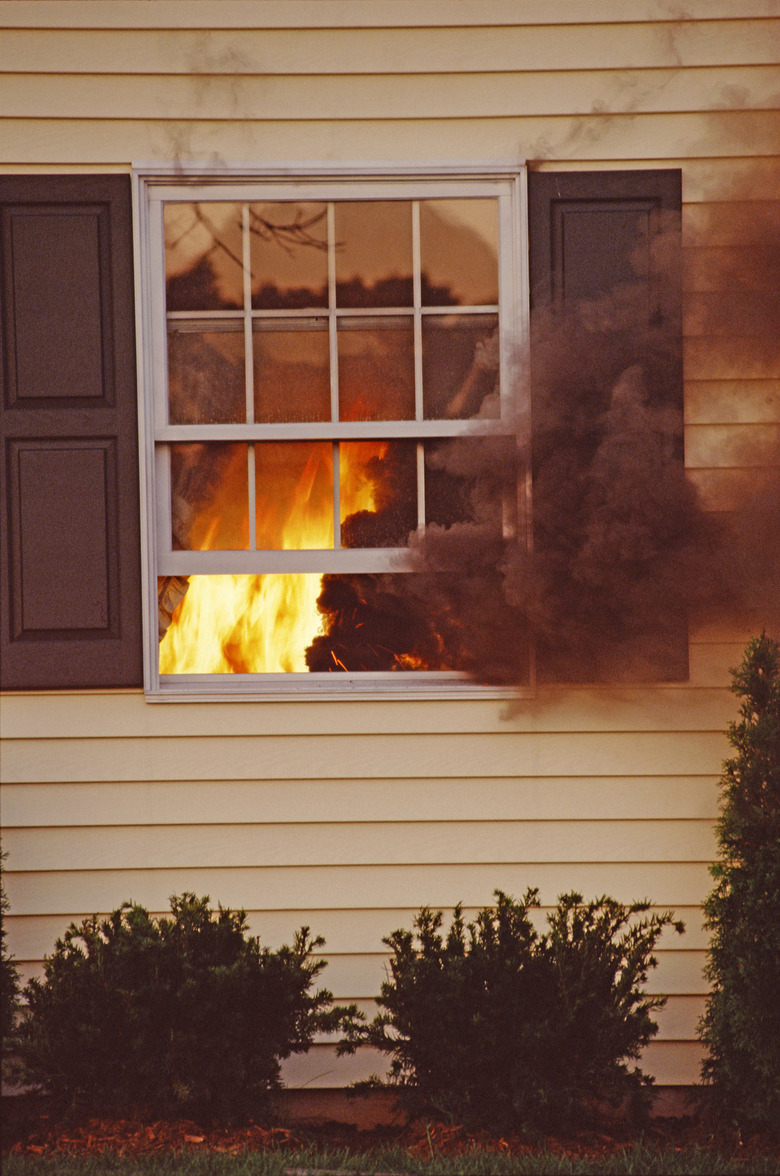How To Make Polyethylene Fire Retardant
Polyethylene is a highly combustible polymer. A low-molecular-weight polymer (low-density polyethylene) forms a flexible plastic, while a high-molecular polymer (high-density polyethylene) makes a tougher and more rigid plastic.Fire-retardant polyethylene in buildings and transportation saves lives and property. Fire retardants interfere with the combustion reaction or block the oxygen source of the flame. The most widely used fire or flame retardants for polyethylene are phosphorus-containing compounds, bromine-containing compounds and bromine-containing compounds together with antimony trioxide. The methods for making polyethylene fire retardant consist of addition, incorporation or coating with flame-retardant compounds. Addition is the simplest and least expensive method and does not change the properties of the polymer.
Step 1
Add a halogen-containing flame retardant to polyethylene during processing. Bromine and chlorine are halogens used in fire-retardant compounds. Polyethylene is usually produced with fillers, unreactive compounds added to the polymer. Brominated compounds are the most widely used fire-retardant compounds. Add them instead of filler. Brominated compounds prevent fires, because they break down at high temperatures, such as those produced by a fire, and form water and bromide radicals which quench the fire.
Step 2
Add antimony trioxide together with a brominated compound to polyethylene during processing. Antimony trioxide acts synergistically with brominated compounds to enhance fire-retardant properties by slowing down the combustion process.
Step 3
Add a phosphorus-containing compound together with a brominated compound to make polyethylene fire retardant. Phosphorus flame retardants prevent fire by promoting charring. In case of fire, a phosphorus compound will release phosphoric acid, which produces a thick layer of carbon and will cut off the fuel for the flame.
Step 4
Add hydrated aluminum oxide or magnesium oxide alone or together with bromine or phosphorus compounds to low density polyethylene. During a fire, these compounds decompose and absorb energy. They reduce the fire by releasing water and form a fire barrier by charring. Alum oxide and magnesium oxide are non-toxic, non-volatile and environmentally friendly.
TL;DR (Too Long; Didn't Read)
The choice of flame retardant is determined by the manufacturer of the final product.
Flame retardants can be added or reacted with polyethylene. Reactive flame retardants become part of the polyethylene polymer backbone and may change the properties of the plastic.
Additive flame retardants can be added to polyethylene prior to, during or after polymerization. Manufacturers usually add the flame retardant after polymerization.
Different halogenated flame retardants vary in their thermal stability.
The flame retardants used for polyethylene are also used for polypropylene.
All flame retardants in the United States have to comply with the Toxic Substances Control Act law.
Warning
Although brominated compounds are widely used as flame retardants, toxic products may be released during a fire. Some brominated compounds such as DecaBDE (decabromodiphenyl ether) and OctaBDE (octabromodiphenyl ether) are being discontinued for use as fire retardants.
Cite This Article
MLA
Blue, Marie-Luise. "How To Make Polyethylene Fire Retardant" sciencing.com, https://www.sciencing.com/how-12071421-make-polyethylene-fire-retardant/. 9 January 2018.
APA
Blue, Marie-Luise. (2018, January 9). How To Make Polyethylene Fire Retardant. sciencing.com. Retrieved from https://www.sciencing.com/how-12071421-make-polyethylene-fire-retardant/
Chicago
Blue, Marie-Luise. How To Make Polyethylene Fire Retardant last modified March 24, 2022. https://www.sciencing.com/how-12071421-make-polyethylene-fire-retardant/
